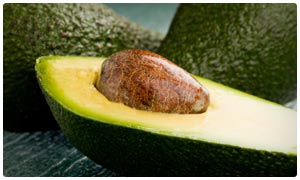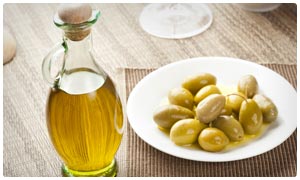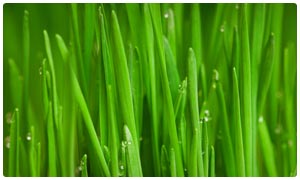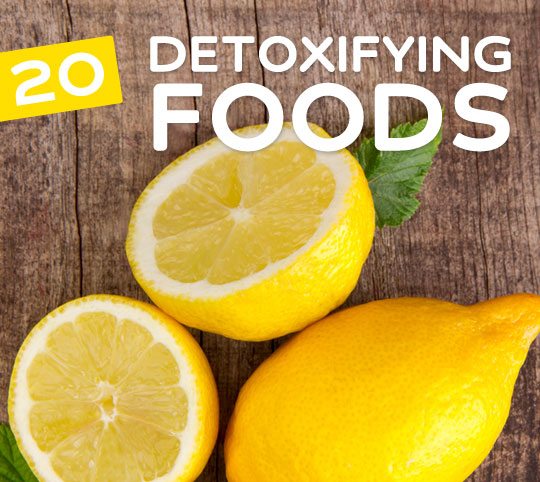The connection between the body and the mind is a very real one, with the way your body feels playing a big part in how your brain functions and whether or not you experience a state of well-being. Keeping it free of toxins, free radicals, and other nasty things that can end up in our insides is essentially to maintaining a healthy life. You’ll notice that with many of these detox foods the road to purification goes through the liver, and getting it to full capacity can have several long-lasting benefits throughout the body.

Artichokes
Artichokes help the liver function at its best, which in turn will help your body purge itself of toxins and other things it doesn’t need to survive. It ups the liver’s production of bile, and since bile helps break down foods which helps your body use the nutrients inside them, an increase in bile production is typically a good thing.
Aside from all of the benefits to your liver, it’s also filled with fiber, protein, magnesium, folate, and potassium. It’s simply a good food to add to your diet in order to stay regular, stay healthy, and keep your liver happily doing its job.

Asparagus
Despite being a tasty veggie asparagus ranks highly on the detox-o-meter. Not only does it help to detoxify the body, it can help you wage the anti-aging battle, protect you from getting cancer, help your heart to stay healthy, and is a general anti-inflammatory food.
It’s also known to help with liver drainage, which might sound like a bad thing, but since the liver is responsible for filtering out the toxic materials in the food and drinks we consume, anything that backs up its drainage is not doing you any favors.

Avocados
Because of its fiber and antioxidant count this is a food that is making it onto more and more detox lists. At first many shied away from them because of they’re high in fat, but ever since the difference between good fats and bad fats become more commonly known, they are now getting the respect they deserve.
Don’t think that the guacamole you can add to your meal at a fast food restaurant for 50 cents more is going to do the detox trick. Opt for organic avocados and consume them without any other ingredients to get the full benefit of their healthy content.

Beets
You may only see beets when you order a Greek salad, but you should make a bigger effort to include them into your regular menu, and definitely pick some up if you’re going on a detox diet. There are so many different benefits to them, it’s easy to see why they are often mentioned as a super food.
When you’re detoxing they will help by making sure that the toxins you’re getting out actually make it out of your body. Many detox cleanses go wrong when toxins are reintroduced to the body because they don’t make it all the way out. Beets also help with free-radicals, making them an anti-cancer aid.

Broccoli
You’re probably sick of seeing broccoli show up all over the place whenever health food is mentioned. But that’s only because it packs a nutritional punch in a mini-tree shaped vegetable. Why does it belong on your detox food shopping list? It specifically works with the enzymes in your liver to turn toxins into something your body can eliminate easily.
If you’re stuck for ways on how to make broccoli taste better try changing up the way you cook it, or consider eating it raw. But don’t microwave it or it won’t have the same detox properties.

Cabbage
Don’t let the fad Cabbage Soup Detox Diet throw you off course with this helpful vegetable. Like most things that go viral this diet has some truth to it, but you don’t have to go to extremes. Cabbage helps your liver with the byproduct being lower cholesterol, so there is more than one reason to include this cruciferous vegetable.
In addition to cleansing your liver cabbage will also aid in helping you go to the bathroom, which in turn helps you expel the toxins, getting them out of your system so you can start fresh.

Dandelions
Happy liver, healthy life is the motto here, and dandelion root can help you on your quest to a healthy liver that does its daily duties. This plant is considered a weed by most lawn enthusiasts, but it has several healing properties for the liver, and therefore should not be overlooked when it comes time for detox.
Dandelion has been used to treat liver problems dating back hundreds of years, but you don’t have to wait until your liver is in dire straights to get the benefits. Strengthening an already healthy liver will still yield plenty of good results and makes it worth looking into dandelion on your quest for a cleanse.

Garlic
Many detox diets list garlic as a crucial piece of the puzzle. The reason is that garlic boosts up the immune system as well as helping out the liver. One good thing about garlic is that you can up your intake of it without having to worry if your body is going to get used to it or build up a resistance.
One other positive aspect is that it can help to add flavor to otherwise bland foods that you’ll be eating on your detox program. But if you don’t like the taste of garlic you can still get its benefits because it comes in supplement form.

Ginger
This is one root whose medicinal value dates back to ancient Chinese civilizations, and one that is still believed to offer many health benefits. Often used in a tea or other drink, you can add it to the meals you make as well. It is thought to help the liver function, and has some astringent properties.
Some detox diets ask you to chew on ginger root. You may also find that adding it to hot water makes the water taste better. Basically any way you can think of it get it into your system is going to be beneficial, especially if you’re suffering from a fatty liver caused by too much alcohol, or too many toxic foods and drinks.

Grapefruit
The fiber and the nutrient-rich juices in a grapefruit pack a nice detox punch and can really get your body into action as far as detoxing goes. It’s all about flooding the body with good things for it while helping it dislodge the bad things. The effects of grapefruit on weight loss are well-established, and one reason may be because of the way it makes the liver burn up fat.
The big takeaway on grapefruit is that it gets your liver fired up and ready for action, while infusing the rest of your organs with nutrient-laden fruit juice. It’s a winner when it comes to detox foods.

Green Tea
Green tea is often thought of as a great addition to any detox program because of its high antioxidant value. Antioxidants are helpful because they will help seek out and kill free radicals before they can do any damage. This is a great beverage to drink on a daily basis for this factor alone.
Getting into a healthy state of mind is a matter of feeling like you’re doing what’s best for your body. It can be something as simple as substituting green tea for colas, juices, and other teas so that you can actually be benefiting your body from a beverage instead of hurting it.

Kale
Dr. Oz includes kale in his 48 Hour Weekend Cleanse and recommends blending it up in a shake. However you choose to get it into your body, the benefits are that it contains plenty of nutrients, and also acts as a way to help flush out the kidneys, a set of organs that must be cleansed on any good detox effort.
This vegetable is so good for you that it is often recommended to patients that are following a doctor recommended diet when fighting kidney disease. It’s packed with so many antioxidants and has anti-inflammatory properties as well, not to mention all of the vitamins and minerals it contains.

Lemongrass
This is an herb that is used in Thailand and other parts of the world as a natural way to cleanse several organs at once. It not only helps the liver but also the kidneys, the bladder, and the entire digestive tract. Benefits of using it in your cooking, or drinking it as a tea include a better complexion, better circulation, and better digestion.
It is most often used as a tea in the world of detoxing, and there are several recipes you can try until you find one that suits your tastes best.

Lemons
Lemons and lemon juice are often mentioned when detoxing, and there’s even a few Lemon Detox Diets floating around out there. It’s simply a matter of adding lemon juice to water and drinking it. It’s supposed to flush toxins from your body. Some people add cayanne pepper and sweeten it with sugar, but sugar is not recommended if you’re trying to get a detoxifying effect from it.
It helps with your digestion and you can drink a cup of hot water with lemon added in order to prepare your digestive system for that day’s work.

Olive Oil
Some liver cleanses out there call for olive oil mixed with fruit juice in order to trigger your liver to expunge its gallstones. But aside from that olive oil should be your go-to oil for use in cooking when you’re trying to detox the body. That’s because it has a lot of healthy properties, and makes for a better choice of fat than most of your other options.
Just be sure not to cook with it at high heat. Use it as a salad dress to help things like dark leafy greens go down.

Seaweed
This probably doesn’t enter your menu unless it’s wrapped around a piece of sushi, but seaweed has a ton of nutrients and antioxidants in it. If you’re trying to get more detox foods into the body, don’t go for the nori they used to hold together a sushi roll, you’ll want to go with kelp instead to get the most out of it and avoid the salt that’s added to the dried nori.
The kelp is used in Asian cuisine and can often be found in soups. That’s a great way to have it when you’re detoxing, and it makes it so it’s easy to digest and tastes good too.




+ 4 Things to Avoid




Keep in mind that not one single detox food on this list is a magical one that you can focus all of your attention on to fully cleanse the body. Consider increasing your intake on as many as you can reasonably accommodate. Some might be hard to incorporate, either because you can’t find them locally or you can’t picture yourself adding them to your diet. Just do the best you can to come up with a detox plan that works for you and that you feel good about.
You may also like 28 Simple & Natural Ways to Detox Your Body.

























